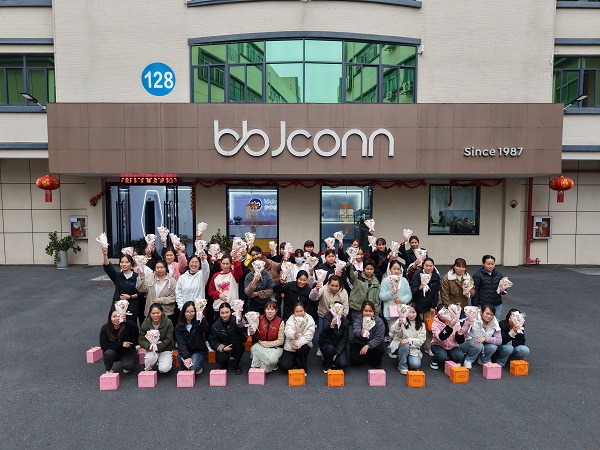38 years of BBJconn, paying tribute to the power of women
发布时间:2025-03-26作者:Shenzhen BBJ technology co., LTD点击:422
38 years of BBJconn, paying tribute to the power of women
Today is the International Women's Day, and it is also an important moment for the 38th anniversary of BBJconn. After 38 years of hard work, BBJconn has always adhered to its original intention, leading the development of the industry with technological innovation, and is well aware of the value of every employee. In this long struggle, countless female compatriots have written a brilliant chapter of BBJconn with their wisdom and sweat.
38 years, we have witnessed their power
From technology research and development to precision manufacturing, from quality control to market development, female employees can be seen in every corner of BBJconn. They are engineers, quality control experts, sales elites, managers... They use delicate thinking, rigorous attitude and unremitting efforts to support half of BBJconn's development.
38 years, we are grateful for their efforts
In the high-end manufacturing industry, women's power is also indispensable. With their focus and perseverance, they give products higher precision; with their innovation and thinking, they drive the company forward steadily; with their responsibility and commitment, they become the irreplaceable backbone of BBJconn. Every growth of BBJconn is inseparable from the hard work and wisdom of female compatriots.

In the future, we will continue to care for women and create a better future together
People-oriented is the concept that BBJconn has always practiced. We not only pay attention to the quality of products, but also pay more attention to the growth and happiness of employees. In the future, we will continue to optimize the workplace environment, provide more growth opportunities, help female employees to make breakthroughs in their careers, and create a better development space. At the same time, we will also practice corporate social responsibility with a firmer sense of responsibility, care for women, and contribute corporate strength to building a harmonious society.
38 years of BBJconn, pay tribute to every struggling her!
On this special day, BBJconn expresses its most sincere respect and gratitude to all female employees. May you bravely pursue your dreams, shine, and become a better self!
May all women be treated gently, and may the world be better because of them! BBJconn, walks with you to create the future together!